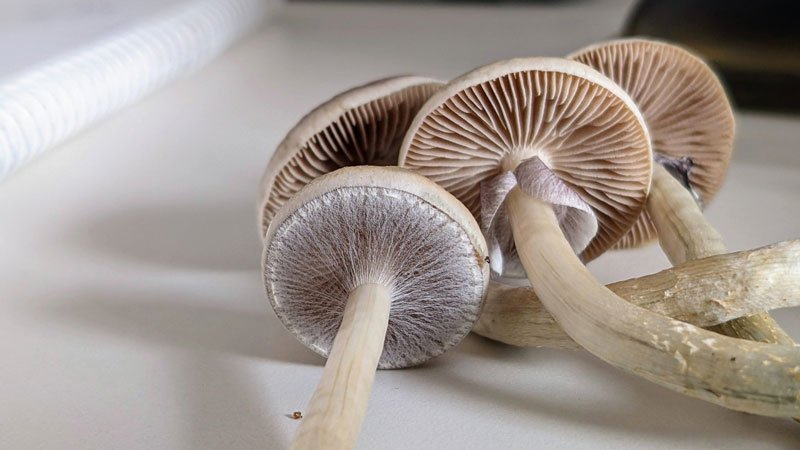How Long Do Mushrooms Stay in Your System: Key Insights
Psychedelic mushrooms, commonly referred to as “magic mushrooms,” have gained popularity in various circles for their psychoactive properties, primarily due to the compound psilocybin. As interest in these substances grows, many individuals wonder how long these mushrooms remain in their systems and the factors influencing this duration. Understanding the pharmacokinetics of psilocybin is essential for users who may be considering consumption for recreational, therapeutic, or spiritual purposes. In this article, we will explore how long mushrooms stay in your system, factors that influence their duration, and the implications of detection methods.
Understanding Psilocybin Mushrooms
Psilocybin mushrooms contain psilocybin, which the body metabolizes into psilocin, the active compound responsible for the psychedelic effects experienced during consumption. These mushrooms can induce altered perceptions, profound thoughts, and emotional experiences, leading users to seek them out for various reasons, including exploration of consciousness and personal growth.
Typically, the effects of psilocybin mushrooms can last anywhere from 4 to 6 hours, but the compounds can remain detectable in the body for a longer duration. Understanding how long they stay in your system can help users manage their experiences and legal responsibilities.
Factors Influencing Detection Duration
The length of time psilocybin mushrooms stay in your system can be influenced by several key factors:
1. Metabolism
Metabolism is one of the most significant factors affecting how quickly substances are processed and eliminated from the body. People with faster metabolisms can metabolize and excrete psilocybin more quickly than those with slower metabolic rates. Age, gender, body composition, and overall health can all impact metabolism, leading to variability in how long mushrooms remain detectable in the system.
2. Dosage
The quantity of mushrooms consumed directly impacts the duration they remain in your system. Higher doses can result in longer detection times. Frequent users may also experience cumulative effects, leading to a prolonged presence of psilocybin metabolites in the body.
3. Frequency of Use
Chronic or regular users of psilocybin mushrooms may find that the compounds linger longer in their systems compared to occasional users. This is partly due to the body’s accumulation of psilocybin and its metabolites with repeated use.
4. Body Composition
Individual body composition, including factors such as fat percentage and muscle mass, can affect the storage and elimination of substances. Psilocybin, like many other compounds, may have different clearance rates depending on an individual’s body type.
5. Hydration and Diet
A person’s hydration level and diet can also influence how quickly psilocybin is metabolized and eliminated. Staying well-hydrated can facilitate the excretion process, while certain foods may affect metabolic pathways and the overall health of the liver and kidneys.
Detection Times for Psilocybin Mushrooms
The detection time for psilocybin mushrooms varies depending on the method of drug testing used:
1. Urine Testing
- Detection Time: Psilocybin is typically detectable in urine for 1 to 3 days after ingestion. However, this duration may extend with larger doses or frequent use.
- Explanation: Urine tests are the most common method for drug testing due to their non-invasive nature. Psilocybin is metabolized into psilocin, which is then excreted through urine.
2. Blood Testing
- Detection Time: In blood, psilocybin can generally be detected for up to 24 hours after consumption.
- Explanation: Blood tests are less commonly used for psilocybin detection, as they are invasive and have a shorter detection window. They are primarily employed in specific medical or legal scenarios.
3. Saliva Testing
- Detection Time: Psilocybin can be detectable in saliva for approximately 1 to 3 days post-consumption.
- Explanation: Saliva tests are becoming more common for various substances, but their effectiveness for detecting psilocybin is generally lower than urine tests.
4. Hair Testing
- Detection Time: Psilocybin can potentially be detected in hair follicles for up to 90 days or longer after ingestion.
- Explanation: While hair testing can provide a longer detection window, it is less commonly used for psilocybin due to external factors affecting drug deposition in hair.
The Effects of Psilocybin Mushrooms
Understanding the duration of psilocybin mushrooms in your system also involves recognizing their effects. Upon ingestion, users may experience:
- Altered Perceptions: Visual and auditory distortions, often described as hallucinations, can occur.
- Emotional Changes: Users may feel intense emotions ranging from euphoria to anxiety or paranoia.
- Physical Symptoms: Nausea, increased heart rate, and changes in body temperature are common physical effects.
- Cognitive Shifts: Users often report profound insights, introspection, and changes in thought patterns.
These effects typically peak within a few hours and can last several hours, but their impact on the body can linger even after the primary effects subside.
Conclusion
The duration for which psilocybin mushrooms remain in your system can vary based on multiple factors, including metabolism, dosage, and testing methods. Generally, psilocybin is detectable in urine for 1 to 3 days and in blood for about 24 hours. Understanding these dynamics is essential for anyone considering the use of psilocybin mushrooms, whether for recreational or therapeutic purposes.
As the conversation around psychedelics continues to evolve, staying informed about their effects and detection can help users navigate their experiences safely and responsibly. Always approach the use of psychoactive substances with caution, awareness of legal implications, and a focus on mental and physical health.














Post Comment